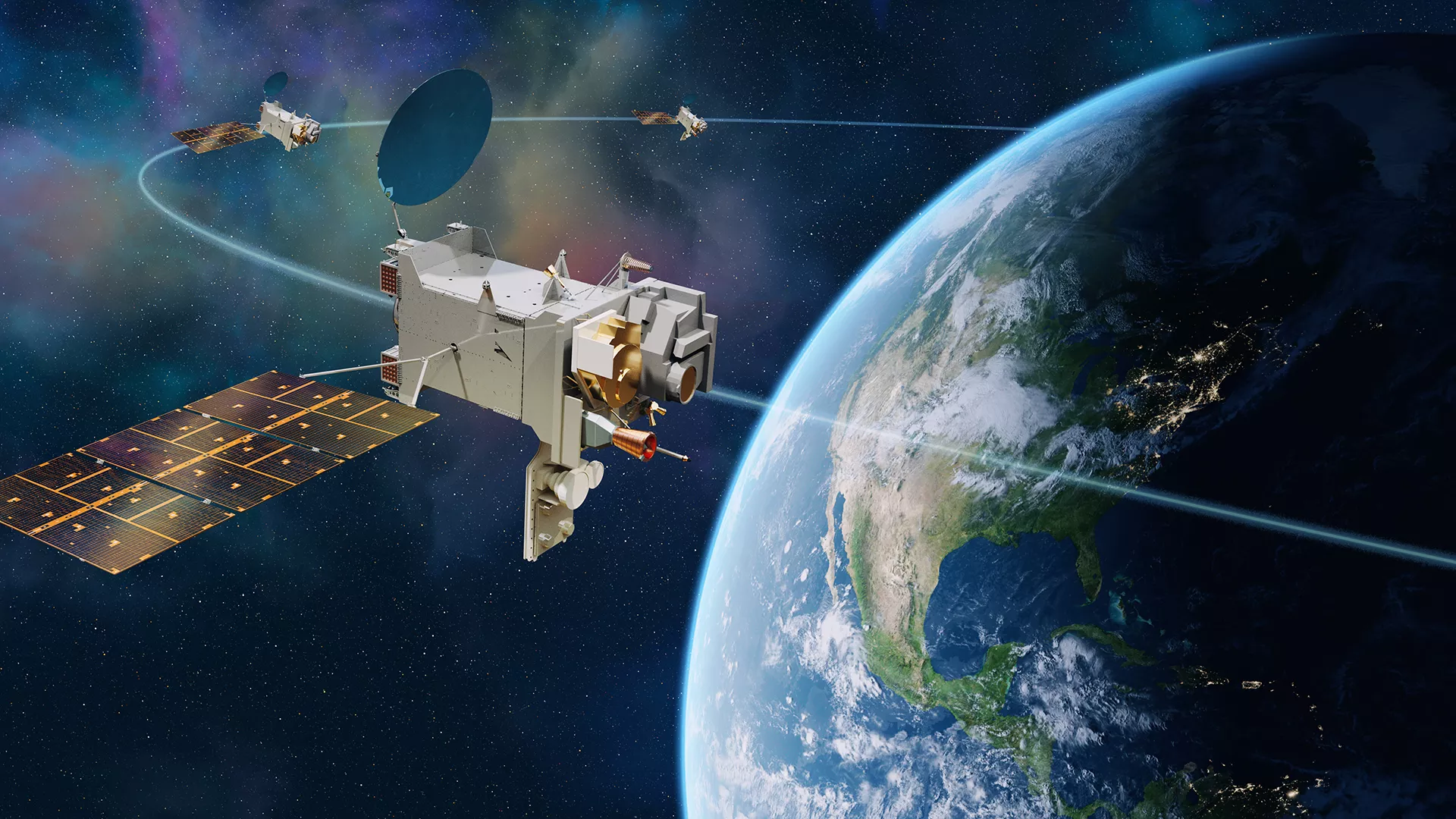
NOAA evaluated a range of space architecture options for delivering the recommended GeoXO observations effectively and efficiently. NOAA is planning a three-satellite GeoXO operational constellation. Spacecraft in GEO-East and GEO-West positions will carry an imager, lightning mapper, and ocean color instrument, and a centrally-located spacecraft will carry a sounder and atmospheric composition instrument. This constellation can also accommodate a partner payload on the spacecraft flying in the central location.
GeoXO Spacecraft Status
On June 18, 2024, NASA selected Lockheed Martin to develop NOAA’s GeoXO spacecraft. The contract includes the development of three spacecraft as well as four options for additional spacecraft. The contract scope includes the tasks necessary to design, analyze, develop, fabricate, integrate, test, evaluate, and support launch of the GeoXO satellites; provide engineering development units; supply and maintain the ground support equipment and simulators; and support mission operations at the NOAA Satellite Operations Facility in Suitland, Maryland.
GeoXO Instruments
GeoXO includes a suite of instruments to meet the observational needs of NOAA’s environmental monitoring mission and the satellite data user community. NASA, on behalf of NOAA, awarded development contracts for all five of GeoXO's planned instruments.
Industry Collaboration
NOAA and NASA are working with industry partners to develop the instruments and spacecraft that will deliver the recommended observations.
The information on this page is subject to change as the GeoXO program develops.
